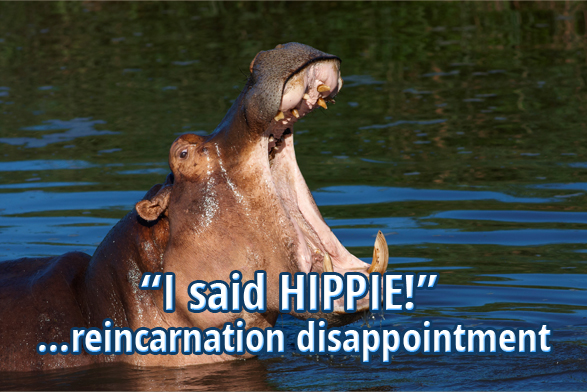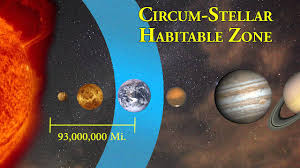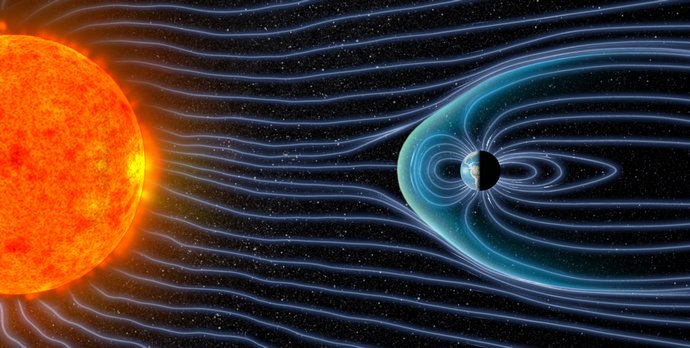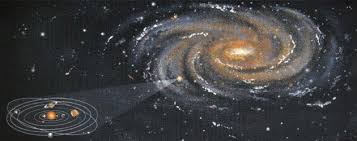The Uniqueness of Planet Earth
Many people feel with all the stars and planets in our universe, there has to be alien life out there somewhere. To answer this question, we’ll look at how unique life is on Earth, in our solar system, in our galaxy and in the whole universe. Since this isa very brief article, I’ll only be mentioning a few points. To mention them all would take a full book.
Almost all of the alien life depicted in science fiction movies or TV shows is humanoid. It looks like us, with a head, two arms and legs, and it exists on planets that are similar to Earth. In our search for extra-terrestrial life, we will assume it will be somewhat humanoid, like we are.
Our place in our solar system:
The first thing we’ll look at that is necessary for humanoid life to exist is…
–liquid water. Life chemicals need a solvent to exist in. The best possible solvent should dissolve many types of molecules, transporting them to reaction sites while preserving their integrity. It should be in the liquid state to allow for mobility. It should also be a liquid over a wide range of temperatures. Liquid water is the best solvent possible by far. It is also necessary for humanoid life to exist. Without liquid water, we would all die in days.
In our solar system, there is only a very small area from our Sun where water exists in the liquid state. This is called the ‘habitable zone’. It extends from after the orbit of Venus to before the orbit of Mars. This is less than 1% of our entire solar system. The only planet in this area is Earth. Because liquid water is so well suited for life, places without enough liquid water are probably lifeless.
–planetary temperature. For humanoid life to exist, temperature variation on a planet must be minimal. On Earth, our temperature variation is generally between -20F and +120F, a 140F variation. On all of the other planets in our solar system, the temperature is either too cold, too hot or the temperature variation is too great. See the table below…
Planet: Temp variation: Temp difference:
Mercury -290F/800F 1,090F
Venus 880F always
Earth -20F/120F 140F
Mars -225F/95F 320F
Jupiter ?/-162F
Saturn ?/-218F
Uranus ?/-322F
Neptune ?/-330F
–planetary surface. Humanoid life must have a rocky surface, not a gaseous surface. The first 4 planets have a rocky surface, one where you can plant your feet on. They are Mercury, Venus, Earth and Mars. The last 4 planets, Jupiter, Saturn, Uranus and Neptune, are gaseous planets. Their outer atmosphere is gaseous, The deeper down you go, it gradually turns into a really cold liquid and then finally a frozen solid. These gaseous planets are made up of hydrogen, helium and a little methane and ammonia.
–planetary atmosphere. We’ll only concern ourselves with rocky planets.
Mercury, the closest planet to the Sun, doesn’t have an atmosphere as the Sun heated it up and blew it away.
Venus’ atmosphere is mostly made up of carbon dioxide with clouds of sulfuric acid. Clouds cover the entire surface of Venus.
Mars atmosphere is mostly carbon dioxide but is a very, very thin atmosphere. It’s only about 10% as thick as Earth’s atmosphere.
Earth’s atmosphere is 78% nitrogen + 21% oxygen + 1% other gases. The unique thing about our atmosphere is that it blocks out the lethal rays from our Sun but let’s in the good rays. Our atmosphere is also transparent, which means that we can see thru it to observe the universe. The gas in our atmosphere that blocks out the lethal sunlight is ozone. It’s a one inch layer high up in our atmosphere. Without this one inch layer of ozone, the Sun’s high energy rays would boil our brains in seconds.
–planetary surface pressure. On Earth, it’s 14.7 pounds per square inch of air pressure pushing against our skin. Our skin pushes back with the same pressure so we don’t feel any pressure on our bodies at all.
Mercury – there is no surface pressure because there is no atmosphere.
Venus has a surface pressure that is 95 times that of Earth, about 1,400 pounds per square inch. That’s why no spacecraft can land on Venus’ surface and last without being completely crushed in minutes.
Mars’ surface pressure is 1/10th that of Earth’s or about 1.5 pounds per square inch. Without a spacesuit on, our bodies would blow up like a balloon and our orifices, like our eyes, would explode out of our heads.
–our Earth is just about the right size and place in our solar system for humanoid life to exist. If it was much bigger, it would be a gas giant like Jupiter. If it was much smaller, it wouldn’t have enough atmosphere, like Mercury or Mars. Even the same size planet may not be habitable. Venus is close to Earth’s size but it’s definitely not hospitable to humanoid life. Even another Earth-like planet may not have an ozone layer in its upper atmosphere.
Earth’s atmosphere content is just right. Anymore oxygen and fires would break out spontaneously. Any less oxygen and we’d suffocate.
–Earth’s magnetic field also shields us from more of the Sun’s harmful rays.
Our place in our Milky Way galaxy:
–we’re about1/2 to 2/3rds from the center of our galaxy but we’re a little below the plane of the galaxy. Being below the galactic plane gives us a much better view of our own galaxy plus all the galaxies ‘south’ of ours.
-if we were nearer to the center, our night sky would be brighter but it would obscure our view of the rest of the night sky.
–being closer to the center of our galaxy would be more dangerous. There would be a lot more harmful radiation hitting the Earth. We’d also be more susceptible to comet collisions.
–the outer regions of our galaxy are safer but those stars would be accompanied by smaller rocky planets that would be too small to retain an atmosphere.
–the galactic habitable zone, which we’re in, offers the best location to view the galaxy and beyond. Any humanoid life on a planet in this zone could not survive for any number of reasons.
–2/3 of the stars in our galaxy are what we call multiple star systems (MSS). MSS have 2 or 3 stars that orbit each other. Any planet circling 2-3 stars would have very extreme temperature variations on it. Way too extreme for humanoid life to develop or exist on. Our Sun is a single star and not a MSS. The nearest star system to us is the Centauri star system. It is made up of 3 stars. They are Proxima, Alpha and Beta Centauri. They are 4.3 light years away. That’s about 26 trillion miles away.
–there are 70 different types of single stars. We may be able survive on about 9 of them.
–the discovery of exoplanets, planets orbiting other stars, has completely destroyed our ideas of how solar systems form. We now have no idea as to how they form.
These are only a very few of the unique reasons why humanoid life elsewhere in the universe is almost impossible to exist by natural means. Even secular writers agree with this. Ward & Brownlee’s book, “Rare Earth: Why Complex Life is Uncommon in the Universe” says the same thing in much greater detail. The intelligent design book “The Privileged Planet” by Gonzalez & Richards echoes this also. This conclusion should come as no surprise to Christians as we see our existence as a very special creation by a loving, all-wise God who will eventually restore the created universe and us to our original perfect condition. What a day that will be.
You may also want to look at;
https://bsssb-llc.com/was-our-universe-designed-for-life/
This link has some very interesting statistics and facts on it.
Regards,
Dave Maynard









